-
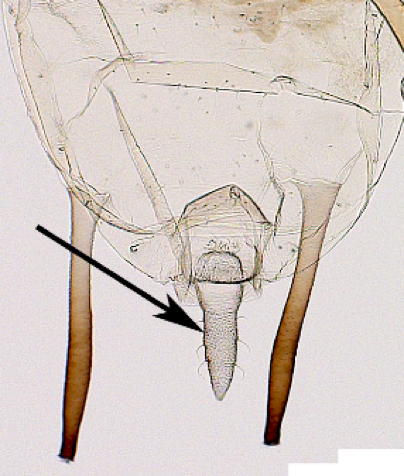
Cauda
Most aphids have a somewhat conical-shaped cauda and usually bears setae.
The cauda here is unpigmented and carries six visible setae.
-
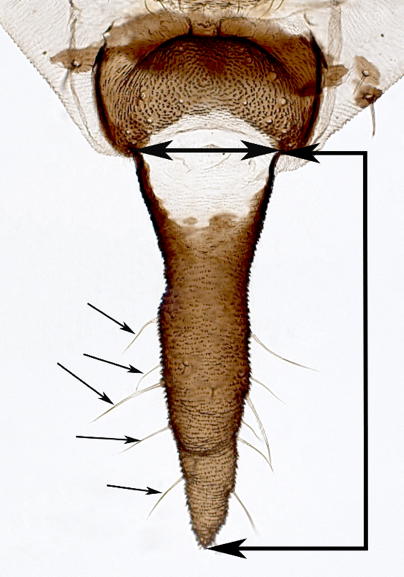
Cauda measurements
Cauda length is measured from the center of the base (in the middle of the line between the two lateral margins) to the tip. The basal width of the cauda is measured from the two lateral margins. Sometimes the basal margins curve outward away from the rest of the cauda. It is best to make the measurement from the inflection points as it is often difficult to find just where the curve ends.
This cauda is pigmented dark. The arrows highlight the length, basal width, and some of the caudal setae.
-
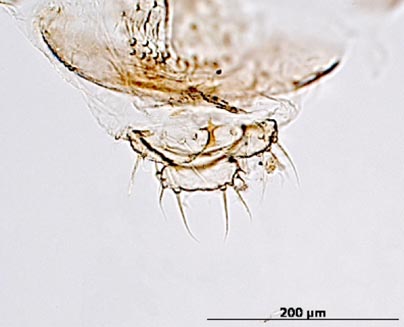
Knob-shaped cauda
Some aphids have a cauda shaped like a knob.
-
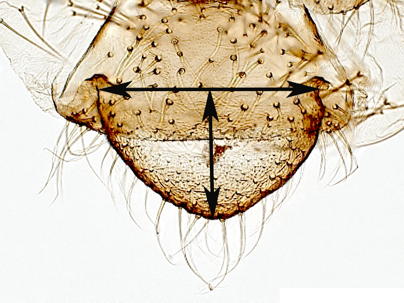
Dome-shaped cauda
Some caudas are reduced as simple domes.
Length and basal width measurements of dome-shaped caudas are the same as longer ones (see black arrows). Counting the setae on them is difficult, so setal counts on these caudas are not part of the AphID key.
-
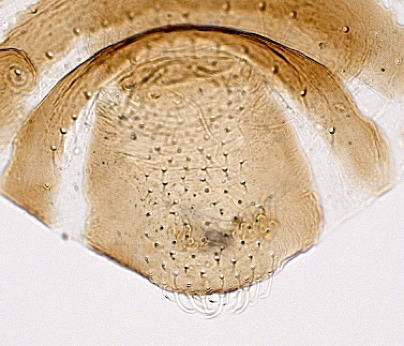
Fused cauda
In some cases the cauda may be indistinguishable.
This cauda is not measureable.